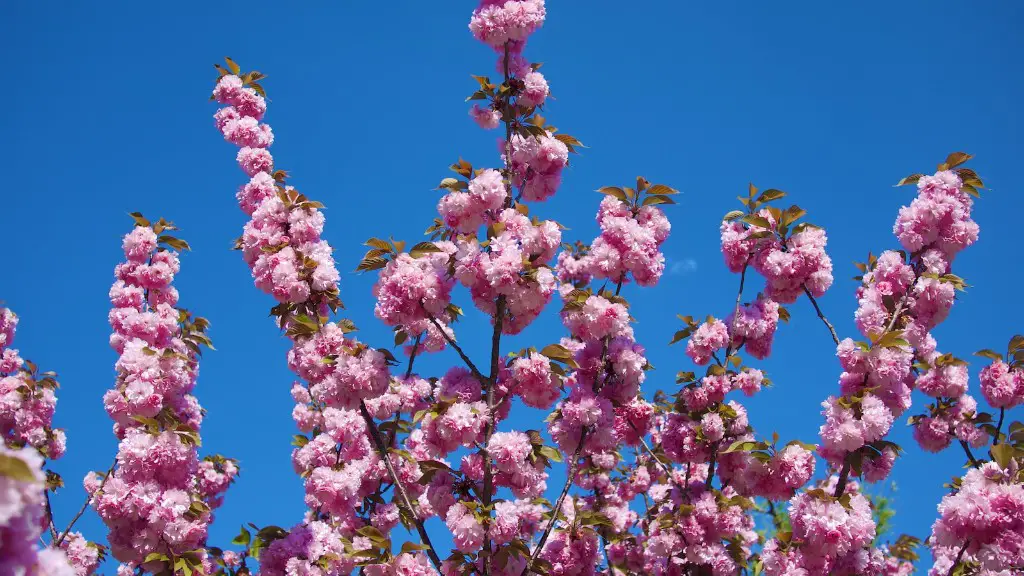How to Revive a Dying Palm Tree Plant
Caring for a palm tree is a rewarding, but sometimes difficult, endeavor. If your palm tree, also known as Arecaceae, is in bad condition, you may worry that it will not recover. Fortunately, it is possible to revive a dying palm tree plant with a few simple steps. This article will provide an overview of how to revive a dying palm tree, starting with the basics and continuing through more advanced techniques.
To revive a dying palm tree, start by checking the soil. Make sure it is not overly dry or saturated with water. Follow up by providing ample light, though be aware that all of the sunlight can damage the palm tree’s leaves. Water your palm tree thoroughly and check the soil for signs of fungal or bacterial decay. If there is, then prune the diseased parts of the tree.
Another way to revive a dying palm tree plant is by fertilizing it. Over time, the levels of certain nutrients naturally important to the growth and health of a palm tree will decrease, or become insufficient. Fertilizers can help to replenish the lost levels of these key nutrients. Be sure to read the instructions provided on the side of the fertilizer package and fertilize only in moderation and according to the recommended rate.
Additionally, consider adding organic matter (such as compost or mulch) to the soil. This helps the soil to retain water and stay moist, which is essential for the health of the palm tree. Lastly, consider replacing your current soil with alternative soil, such as sand or peat moss. These soils provide better nutrients for your palm tree and also allow for more root growth, which is essential for its survival.
In summary, if your palm tree is not doing well, there are several steps you can take to revive it including checking the soil, providing enough light, water, and fertilizing. Additionally, adding organic matter to the soil and replacing the soil can help the tree to take advantage of key nutrients needed for its growth and health.
Signs a Palm Tree is Unwell
Being aware of the signs that a palm tree is unwell is the first step in reviving it. This can include yellowing of the leaves, wilting of the foliage, and shedding of fronds. Additionally, the plant may appear to be stunted, and root rot is often accompanied by a strong, unpleasant odor. If you see any of these signs, take quick action and formulate a plan to help revive the dying palm tree.
Sometimes a palm tree will develop these symptoms even if it is receiving the appropriate care. If that is the case, consult with an expert for help. For example, if you live in a warm climate, a certified arborist might be able to diagnose the issue and suggest the appropriate solution.
Proper Care Techniques
Once your palm tree is showing signs of life, proper care techniques are needed to ensure that it remains healthy. Consult with a local expert or look online for best practices. Typically, palm trees require weekly watering, although the frequency of watering will depend on the species of palm tree and environmental conditions. Additionally, it is important to monitor the light and temperature the palm tree is exposed to. Most species of palm trees thrive in warm temperatures and bright light, though direct sunlight should be avoided.
Fertilizer is also essential for the health of a palm tree. Avoid using too much fertilizer, as that can cause burn spots to form on the fronds. However, use enough to ensure that the tree is receiving the nutrients it needs to remain healthy. Additionally, unwanted debris in the fronds should be removed on a regular basis to improve the appearance of the tree and encourage the new growth of fronds.
Potential Issues
It is important to keep an eye out for potential issues or diseases. These can include crown rot, stem rot, and root rot. They are caused by fungi, bacteria, or avirulent bacteria. If left unchecked, these issues will cause the tree’s fronds and branches to die, and eventually, the entire tree may die.
One way to help prevent and/or identify potential issues is to inspect the tree regularly, which allows you to take action quickly. Additionally, having an expert on call can help diagnose and treat any potential problems that may arise with your palm tree.
Transplanting a Dying Palm Tree
If all else fails, you may need to move the dying palm tree. This should be done by a professional, as it is risky and could cause further damage to the tree. Before transplanting your palm tree, check with a local nursery for potential new environments and/or soils that may improve the health of the tree.
Additionally, consider planting your palm tree in a container or rock garden. This will help the roots to take hold and provide more stability and a firmer base. Be sure to provide adequate drainage and use soil amendments to help the tree remain healthy.
Protecting and Insuring a Palm Tree
After reviving your palm tree, it might be a smart idea to look into tree insurance. This will provide financial protection against any future damage or potential diseases. Additionally, there are some local and regional programs that provide additional protection for specific species of palm trees. For example, in some areas, palm tree protection is mandatory and any pruning or removal requires a permit.
Ultimately, reviving a dying palm tree requires patience and dedication. If you are willing to put in the work, then you can give your palm tree the health it needs to thrive. Make sure to follow the steps outlined in this article and never be afraid to seek help from a professional. With a little time and effort, you can restore your palm tree to its former glory.



